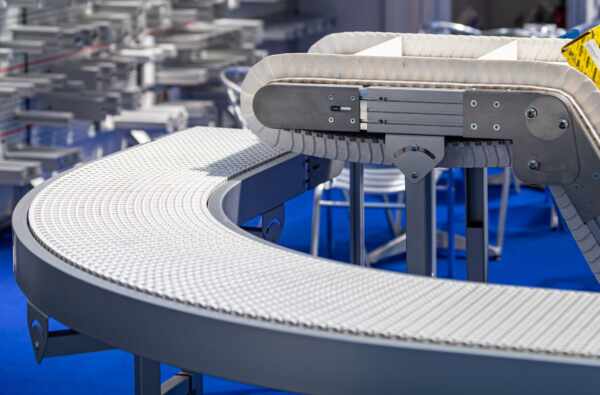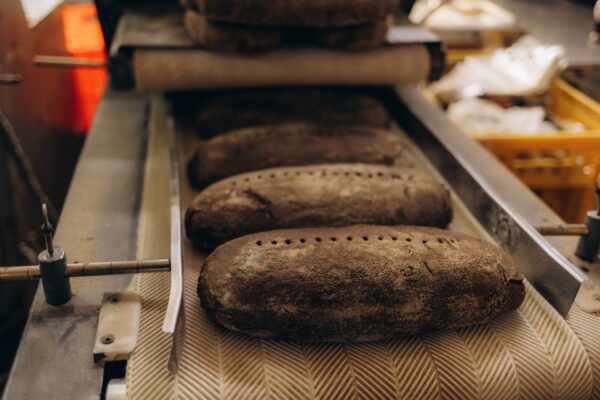The food manufacturing industry demands a high level of scrutiny, compliance, and dedication to ensuring the utmost safety and quality in production processes. One critical factor contributing to such operations’ success is the facility’s conveyor belt system. The right conveyor belt choice can significantly impact food safety, operational efficiency, and overall plant productivity, making it vital for food manufacturers to be well-informed about their options.
In this comprehensive guide, we will explore the process of selecting the optimal conveyor belt type for food manufacturing, considering factors such as materials, hygiene, durability, and more. With many conveyor belt types available, it’s essential to understand the features, benefits, and limitations when determining their suitability to your facility’s unique needs. From stainless steel and fabric belts to modular plastic variations, we will provide the insights required to make an educated decision that aligns with your company’s food production goals.
As industry professionals with extensive experience in conveyor belt systems, our mission is to share our knowledge and empower you to make informed decisions in the pursuit of operational efficiency, safety, and compliance. Join us as we venture into the world of conveyor belt selection for food manufacturing with practical advice, tips, and considerations guaranteed to boost your facility’s success in this competitive industry landscape.
1. Prioritising Food Safety and Hygiene
Food safety and hygiene are paramount in all aspects of food manufacturing, and selecting the right conveyor belt is a crucial step in maintaining these high standards. From the material properties to the features of the belt, there are a number of factors to consider when assessing a conveyor belt’s suitability for food handling.
Key factors to consider for food safety include:
- Material compliance: Choose belts made from materials compliant with food safety regulations such as FDA or EU standards. These materials include stainless steel, food-grade plastics, and certain fabric coatings suitable for various food applications.
- Cleanability: Opt for belts that are easy to clean and maintain, reducing the risk of contamination or bacterial build-up throughout the production process. Belts with features like resistance to water absorption, antimicrobial properties, and smooth surfaces can enhance cleaning efficiency.
2. Assessing Belt Types for Food Manufacturing Applications
There are different conveyor belt types, each boasting distinctive properties that make them ideal for specific food manufacturing applications. The challenge is to select the belt type that optimally aligns with your unique process requirements.
Popular conveyor belt types for food manufacturing operations include:
- Stainless steel belts: Durable, hygienic, and easy to clean, stainless steel belts are suitable for a wide range of food processing applications, particularly those requiring high-temperature resistance or exposure to harsh chemicals.
- Fabric belts: Commonly used for applications requiring gentle product handling, fabric belts can be outfitted with food-grade coatings, making them suitable for bakery, confectionery, or snack food processing.
- Modular plastic belts: Highly versatile and easy to maintain, these belts offer exceptional customisation options for specific food production requirements.
3. Ensuring Durability and Performance
The conveyor belt you select should be capable of meeting the demands of your food manufacturing process, including factors such as product weight, temperature exposure, and high-speed production rates. Durability and performance must be assessed through a combination of factors, including conveyor speed, weight capacity, and maintenance requirements.
Key durability and performance factors to consider:
- Load-bearing capabilities: Evaluate belts that can accommodate the weight of your products and withstand the rigours of high-speed, heavy-load operations.
- Temperature resistance: For applications involving high or low temperatures, choose a belt material that maintains its integrity in extreme conditions.
- Belt tension and tracking: Select belts that offer efficient tension and tracking mechanisms, reducing the risk of production interruptions due to belt misalignment or slippage.
4. Meeting Industry Compliance Requirements
Food production facilities must often adhere to stringent regulatory and compliance requirements in their conveyor belt selections. This includes ensuring that belt materials and components are suitable for direct or indirect food contact, in addition to meeting sector-specific certification requirements.
Aspects to consider for industry compliance:
- Regulatory standards: Determine the relevant FDA or EU regulations pertinent to your facility and ensure that the conveyor belt materials meet these requirements.
- Manufacturing standards: Adhere to strict manufacturing standards such as HACCP or BRC to enhance food safety and bolster consumer confidence in your products.
Conclusion
Optimising your conveyor belt selection for food manufacturing ensures that your facility not only adheres to critical safety, hygiene, and compliance requirements but also maximises operational efficiency and productivity. With the numerous conveyor belt types and materials available, conducting thorough research is essential to determine the right choice for your production process.
If you’re seeking guidance and expert knowledge to help you make informed decisions regarding conveyor belt selection in food manufacturing, don’t hesitate to reach out to Change Parts Pty Ltd. Our team of experienced professionals will work with you to identify the best options for your unique facility requirements and provide solutions tailored to optimise performance, efficiency, and safety. Contact us today and let us help you elevate your food manufacturing operations to new heights of success.




